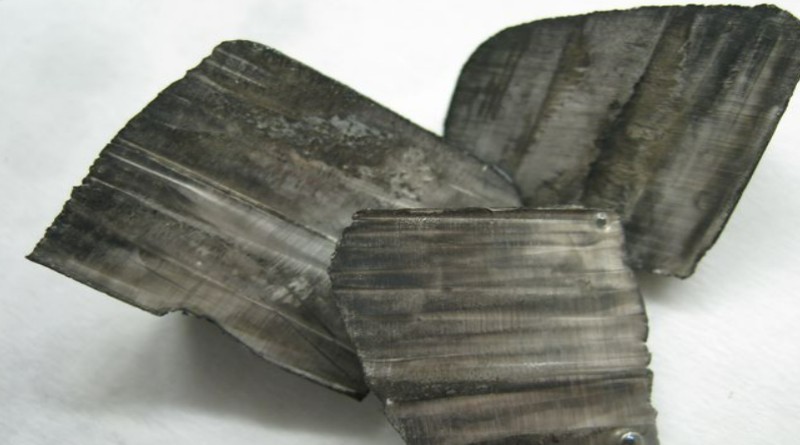Lithium is a chemical element with an atomic mass of 6.941u belonging to the alkali metal series. It will obtain electrolysis of salts such as lithium chloride and apply in several industrial segments as a reagent and catalyst used in the manufacture of polymers; lithium, due to its low density and being a good conductor and energy store, is widely used for the manufacture of batteries. In addition, studies show the efficiency of lithium in the treatment of bipolar disorder and schizophrenia and also in the treatment of thyroid disorders.
History
In 1800, José Bonifácio de Andrada e Silva, the same person involved with Brazil’s declaration of independence, discovered the mineral petalite, also known as castorite. This mineral has it fragments in its composition, which was found and identified as a new element in 1817 by Johan August Arfwedson and Jons Jacob Berzelius during an analysis of petalite. The name lithium comes from Greek and means “something solid.” In 1821, William Thomas Brande isolated the element it via electrolysis.
Obtaining Lithium
Due to the high reactivity of the element, lithium is not found, like other minerals (gold, silver, etc.), in a natural state. Instead, it is found in salts of ionic character and as fragments of other minerals but in insufficient quantity.
It will also find in living organisms in structural fluids. Invertebrates have a concentration of up to 5760 parts per billion (ppb), and in vertebrates, the concentration of lithium varies between 21 ppb and 763 ppb. In marine beings, there is a higher concentration due to the bioaccumulation of the element. However, despite the significant attention of this element in living organisms, its specific physiological function for any of them is not known.
Features Of Lithium

Because it is a very reactive element, it will not find isolation in nature. In its pure form, it oxidizes quickly in air or water.
It will find in the minerals spodumene, lepidolite, and petalite. In addition to rocks, it also occurs in salty and thermal waters. In industrial environments, it will obtain through the electrolysis of it chloride.
It will characterize being a soft, soft, and silvery metal. It acquires a grey color in contact with air, so it is common to keep it in mineral oil.
Among its other features are the following:
- Good conductor of electricity;
- Extremely reactive;
- Quite flammable;
- Lower-density metal is even less dense than water.
- metals
- Chemical elements
- Periodic table
- lithium production
Lithium production for industrial use began in 1923 with the company Metallgesellschaft AG in Frankfurt, Germany. Obtaine Lithium via electrolysis of lithium chloride and potassium chloride salts, a process that continues to use.
Also Read: Understand What Are Mobile App Saas is And Their Advantages
Lithium Applications
It will use to “temper” glass and ceramics, which adds more heat resistance to the pieces. They will use metal alloys in the aerospace and automotive industries, where light and resistant metal parts are needed.
The most significant fraction of it produced will use in manufacturing batteries for cars, cell phones, pacemakers, and computers, as they store a large amount of liveliness in a small amount of mass.
Lithium will use as a reagent and catalyst in industrial polymer manufacturing processes. Lithium-ion is a medicine for those with bipolar disorder and other psychopathies, as it reduces oxidative stress and smoothes the patient’s mood swings.
Studies show positive results in taking small doses of it for endocrine treatments, such as controlling thyroid function.
Risks
The use of lithium as medicine is contraindicated for pregnant women in the first trimester of pregnancy, as it increases the risk of the child being born with Ebstein’s anomaly, a cardiac malformation.
Ingestion of high doses of lithium causes severe reactions in the body, such as nausea, tremors, and diarrhea. In addition, the continuous use of lithium-based drugs can cause damage to the kidneys and thyroid. It should therefore be administered with caution and under the guidance of a specialist doctor.
Lithium is an explosive element and very reactive when exposed to air and water, causing irritation and burns when in contact with the skin and eyes.It batteries should not be exposed to high temperatures, as they are on the verge of combustion and explosion, a reaction that releases various toxic gases.
Also Read: What is E- Waste – Categories, Problems, And More



